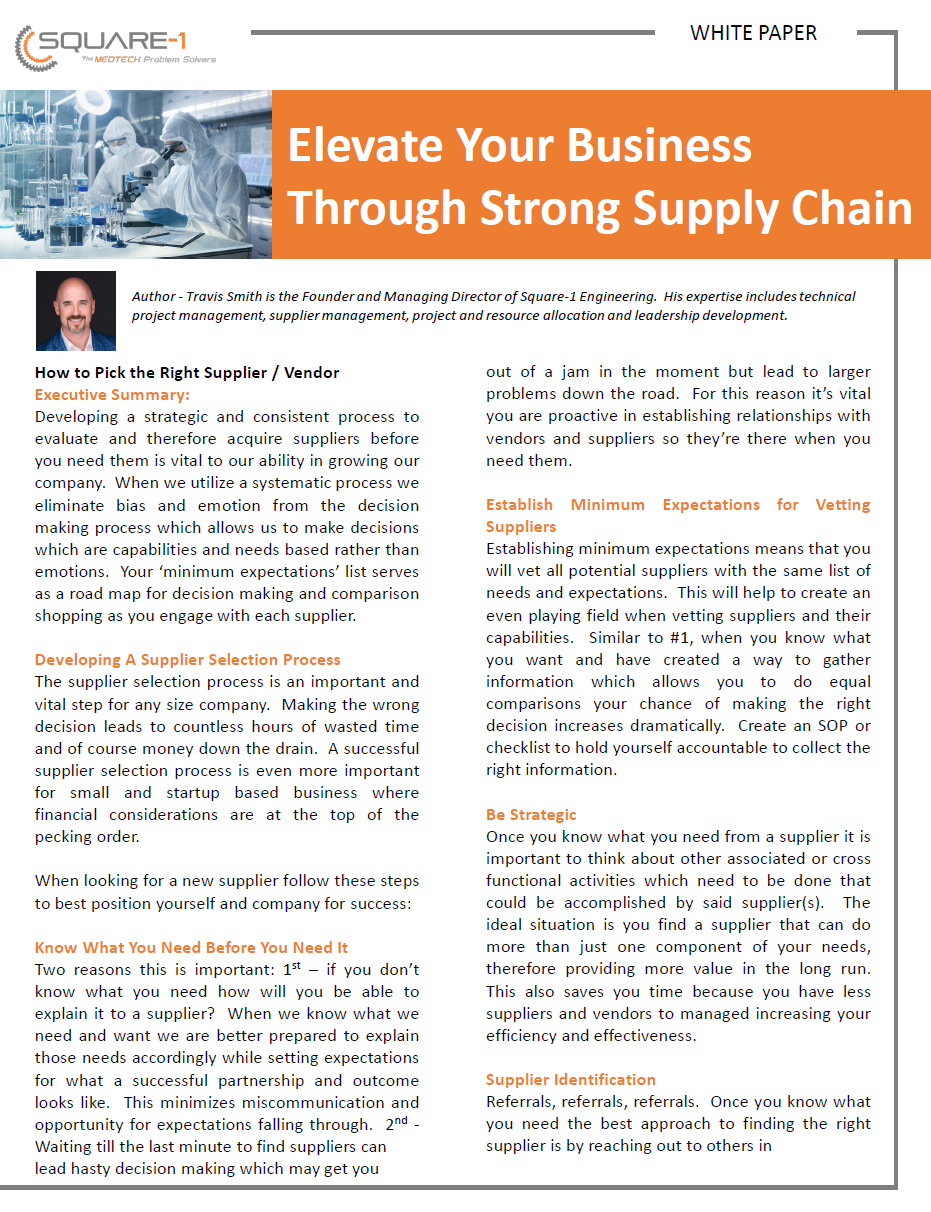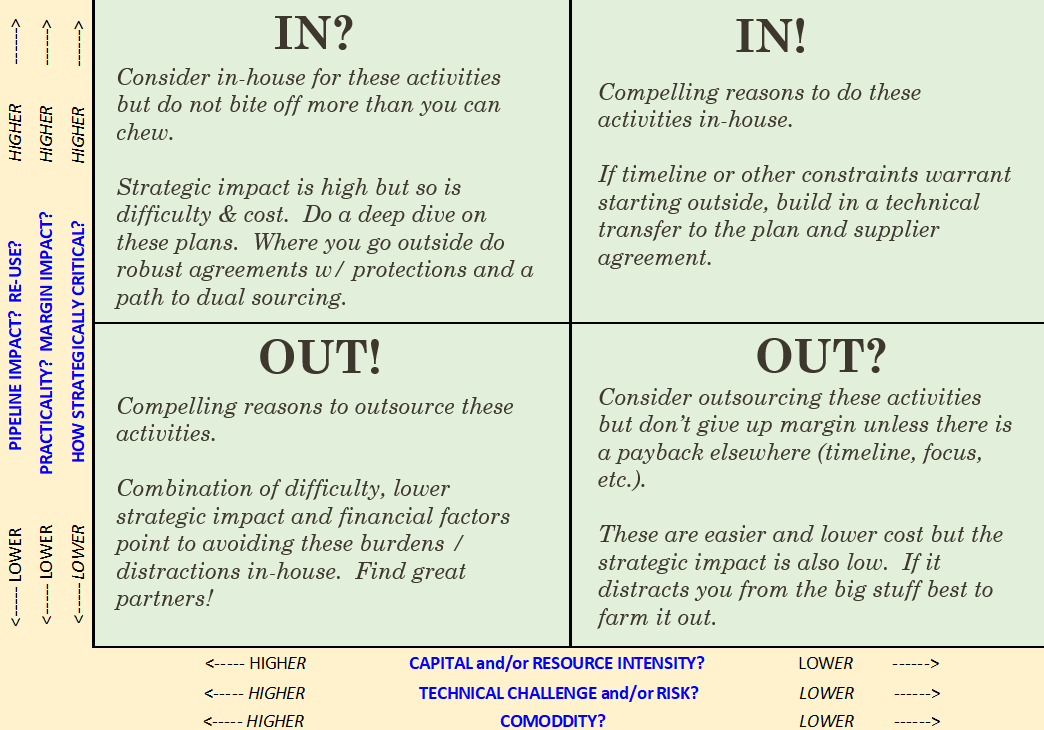|
Episode #20 of Medtech Snapshot features Peman Montazemi, CTO of Bright Uro - overcoming some of the biggest software development challenges for medical device applications.
#software #embeddedsystem #medicaldevice #snapshot #medtechsnapshot #medtech #softwaredevelopment #engineering #newproductdevelopment #regulation #cybersecurity #samd #spdf
0 Comments
Episode 19 of Medtech Snapshot features Scott Nelson, CEO of FastWave Medical sharing insights on the strategy of operating in stealth mode versus public for a medical device start-up.
Are you liking these Medtech Snapshot digests? Check out our archives for more 3 minutes snip-its at https://lnkd.in/gFwF9GYN #snapshot #medtech #medtechsnapshot #startup #stealth #strategy #medicaldevice The art of attracting talent! Nuvaira, Inc. CEO Dennis Wahr M.D. joins us on Medtech Snapshot to discuss strategies in attracting great talent into a small company, especially how to lure talent away from big businesses. Check out https://lnkd.in/gFwF9GYN for our past episodes of Medtech Snapshot. #medtech #news #strategy #talent #hiring #snapshot #podcast The quickest way to overcome a business challenge is to get help from those who are experienced in besting your beast! The team at Square-1 Engineering is comprised of a variety of technical and project management professionals who are subject matter experts in the areas of NPD, Quality, Compliance and Manufacturing Engineering. Learn more about how we can solve your work and project problems today to get you back on track! VISIT HERE Medical device companies play a critical role in advancing healthcare as their ability to diagnose, monitor, and treat medical conditions allow patients like you and I the opportunity to recover and live longer. Device companies carry a heavy burden on our behalf and that burden starts with product risk. One of the biggest challenges an OEM medical device organization will be faced with is managing risk, especially during the early stages of product development. The integration of risk management into design control (ISO 14971) is essential for identifying, assessing, and mitigating potential risks associated with the design and development of a medical device. Given risk management is a part of nearly every development process, and is a primary focus of all regulatory agencies like the U.S. Food and Drug Administration (FDA) and the European Medicines Agency (EMA), why is it then so many medical device companies struggle with sound risk management strategies? The failure to address risks adequately can lead to a whole host of problems ranging from regulatory non-compliance, compromised patient safety, financial setbacks, and in severe situations criminal prosecution of executives. Needless to say, understanding why medical device companies come up short with their risk management strategy and how you can avoid that for yourself is key to your future success. In this article, we will explore some of the key reasons behind risk management failure. Most Common Risk Failure Factor - Inadequate Understanding of Regulatory Requirements: One of the primary reasons for failure in risk management is an insufficient understanding of the complex and evolving regulatory landscape. Medical device companies must navigate a web of regulations, standards, and guidelines to ensure compliance. Failing to keep abreast of these requirements can result in flawed risk assessments, inadequate risk mitigation measures, and ultimately, regulatory sanctions. Poor Integration of Risk Management into Product Development: Successful risk management should be an integral part of the product development lifecycle. However, some companies make the mistake of treating it as a standalone process rather than integrating it seamlessly into every stage of development. When risk management is an afterthought, essential risks may be overlooked, leading to suboptimal product designs, increased failure rates, and compromised patient outcomes. Lack of Cross-Functional Collaboration: Effective risk management requires collaboration across various departments, including research and development, regulatory affairs, quality assurance, and manufacturing. Failure to establish clear communication channels and encourage cross-functional collaboration can result in siloed decision-making. This lack of coordination can lead to critical risks being underestimated or missed entirely. Insufficient Resources and Expertise: Some medical device companies fail in risk management due to resource constraints and a shortage of expertise. This can manifest in inadequate training for personnel responsible for risk management, insufficient allocation of time and budget, and a lack of access to external expertise. Without the necessary resources, companies may struggle to conduct comprehensive risk assessments and implement effective risk mitigation strategies. Overemphasis on Short-Term Goals: Pressure to meet short-term financial goals can sometimes lead companies to prioritize speed to market over thorough risk analysis. This can result in hasty decision-making and inadequate risk identification and mitigation. Companies need to strike a balance between meeting market demands and ensuring the safety and efficacy of their medical devices in the long run. Failure to Learn from Industry Incidents: The medical device industry has witnessed several high-profile incidents related to product failures and patient harm. Failure to learn from these incidents and implement lessons learned into future risk management strategies can perpetuate the same mistakes. Companies must actively analyze industry incidents, update risk management processes accordingly, and continuously improve their practices. Ineffective Communication with Stakeholders: Communication is crucial in risk management, both internally and externally. Companies that fail to communicate effectively with their stakeholders, including regulatory bodies, healthcare professionals, and patients, may face increased scrutiny and regulatory challenges. Transparency and open communication are essential for building trust and demonstrating commitment to patient safety. In the highly regulated and dynamic field of medical devices, effective risk management is not just a regulatory requirement - it is a fundamental aspect of ensuring patient safety and the success of a company. Understanding the pitfalls that lead to failures in risk management can help medical device companies proactively address these challenges. By prioritizing compliance, integrating risk management into every stage of product development, fostering cross-functional collaboration, and learning from industry incidents, companies can enhance their risk management strategies and contribute to the advancement of healthcare with safe and reliable medical devices. The quickest way to overcome a business challenge is to get help from those who are experienced in besting your beast! The team at Square-1 Engineering is comprised of a variety of technical and project management professionals who are subject matter experts in the areas of NPD, Quality, Compliance and Manufacturing Engineering. Learn more about how we can solve your work and project problems today to get you back on track!
Executive Summary
Developing a strategic and consistent process to evaluate and therefore acquire suppliers before you need them is vital to our ability in growing our respective companies. When we utilize a systematic process we eliminate bias and emotion from the decision making process which allows us to make decisions which are capabilities and needs based rather than emotions. Your ‘minimum expectations’ list serves as a road map for decision making and comparison shopping as you engage with each supplier. Developing A Supplier Selection Process The supplier selection process is an important and vital step for any size company. Making the wrong decision leads to countless hours of wasted time and of course money down the drain. A successful supplier selection process is even more important for small and startup based business where financial considerations are at the top of the pecking order. When looking for a new supplier follow these steps to best position yourself and company for success: Know What You Need Before You Need It Two reasons this is important: 1st – if you don’t know what you need how will you be able to explain it to a supplier? When we know what we need and want we are better prepared to explain those needs accordingly while setting expectations for what a successful partnership and outcome looks like. This minimizes miscommunication and opportunity for expectations falling through. 2nd - Waiting till the last minute to find suppliers can lead hasty decision making which may get you out of a jam in the moment but lead to larger problems down the road. For this reason it’s vital you are proactive in establishing relationships with vendors and suppliers so they’re there when you need them. Establish Minimum Expectations for Vetting Suppliers Establishing minimum expectations means that you will vet all potential suppliers with the same list of needs and expectations. This will help to create an even playing field when vetting suppliers and their capabilities. Similar to #1, when you know what you want and have created a way to gather information which allows you to do equal comparisons your chance of making the right decision increases dramatically. Create an SOP or checklist to hold yourself accountable to collect the right information. Be Strategic Once you know what you need from a supplier it is important to think about other associated or cross functional activities which need to be done that could be accomplished by said supplier(s). The ideal situation is you find a supplier that can do more than just one component of your needs, therefore providing more value in the long run. This also saves you time because you have less suppliers and vendors to managed increasing your efficiency and effectiveness. Supplier Identification Referrals, referrals, referrals. Once you know what you need the best approach to finding the right supplier is by reaching out to others in your industry, or industry associations, to learn who they use, and just as important who they don’t use. Take the time to read reviews, gather intel from people you trust before you start calling potential suppliers. While sites like Thomas.net and Google can provide this information, it is likely you will quickly find yourself overwhelmed with information. In the end the most useful data is those which are unbiased or comes from experience -this is best collected from a trusted resource. Outreach and Selection When speaking for the first time with a potential new supplier try to connect with the people you will actually be working with, not just the company’s sales person. This is important because once the relationship is established the majority of your time won’t be spent with their sales people rather those delivering the service or product. What is their communication like? Do they respond quickly and address mistakes immediately? What is their customer retention rate? Find out how long their employees have been with the company too. If the company suffers from consistent turnover that should be a big red flag as you will likely have to be much more involved with this supplier helping coach and direct new employees to ensure the work is done properly. Also, where are you in the pecking order of the level of importance to the supplier? Don’t be fooled not all clients are treated equal, even if they tell you otherwise. When you know where you stand it is easier to build a relationship based on realistic expectations. In the end, supplier selection should come down to three things, in ranked order: 1. Performance 2. Relationship 3. Price Key Takeaway At the end of the day it doesn’t matter how affordable or cost effective a supplier is, or how nice they are as people. If they can’t perform, and do so consistently, the other two don’t matter. I’ve also found that paying a bit more for the right service and relationship often times is worth the investment it in the long run. #whitepaper #supplychain #supplier #vendor #selectionprocess #outsource #square1engineering #medtech #medicaldevice Our most recent Medtech Snapshot features product development executive Barry Fulkerson as he takes us through his strategy of obtaining user needs data on the cheap and how creating a patient advisory board can help get you there.
We have archives! To watch and listen in to our past Medtech Snapshot episodes visit https://www.sqr1services.com/white-papers/category/snapshot #userneeds #medtech #snapshot #medicaldevice #productdevelopment #conceptdevelopment #patient We're breaking the mold!
Medtech Snapshot returns with an enticing debate as #RAQA medtech industry experts Stephanie Rallis-Daw, RAC, CQE, CMDA and Robert Lahaderne, MBA spar on the topic of "When starting a new job/ project, what is the most common medtech compliance shortfall you can expect to encounter at your new company?" New to Medtech Snapshot? Check out our archive of past episodes at https://www.sqr1services.com/white-papers/category/snapshot covering topics in R&D, Quality, Clinical and Manufacturing. Honey for your eyes and ears, friends. #medtech #snapshot #podcast #medicaldevice #compliance #quality #regulatory #documentation #training Today's Medtech Snapshot episode features Seth A. Kaufman, MSHCA as he shares his insights on the best way to land a great clinical research organization (CRO) partner - before you need their help! Hear how Seth outlines his engagement process, things to watch out for and ways to approach your trials with your new partnership. Interested in listening to our past episodes of Medtech Snapshot? Check out our growing library archives at https://www.sqr1services.com/white-papers/category/snapshot #CRO #clinicalresearch #clinical #medicaldevice #medtech #outsourcing #trials #snapshot #partnership The quickest way to overcome a business challenge is to get help from those who are experienced in besting your beast! The team at Square-1 Engineering is comprised of a variety of technical and project management professionals who are subject matter experts in the areas of NPD, Quality, Compliance and Manufacturing Engineering. Learn more about how we can solve your work and project problems today to get you back on track!
One of the biggest challenges professionals face when starting a new job is how they navigate ingratiating themselves into the new company and culture they’re now surrounded by. No two companies are alike, which also means practices, processes and procedures can vary wildly from one company to another. How a new employee, including new management, sorts through this can make or break their ability to be received well by their fellow colleagues while having a good career at their new employer. Imagine you’re in your second week of employment and you begin to uncover a variety of compliance issues like a lack of regulatory understanding throughout the company, poor or missing documentation, insufficient training, little to no post-market surveillance processes or a dinosaur quality management system (QMS) that’s holding the company back. Any of these shortcomings can be problematic for an operation, but the presence of several can be detrimental to the company’s short- and long-term success. It can be a precarious situation to come in as the new ‘gal or guy’ and start changing things right away. In fact, this typically doesn’t bode well for those who take the scorched earth strategy making big changes right out the ‘new hire’ gates, regardless of those changes being warranted. So the question begs to be asked – what do you do if you start a new job and quickly uncover problems within the company’s operations, especially if those problems are compliance related? Taking a measured and strategic approach to your new job and how you will handle the current business practice issues you are experiencing is key to your success. Consider the following process:
Remember that every organization is different, and your approach to addressing poor practices will depend on the specific circumstances. Your ultimate goal should be to contribute positively to the organization's growth and improvement while maintaining your professionalism and integrity. The quickest way to overcome a business challenge is to get help from those who are experienced in besting your beast! The team at Square-1 Engineering is comprised of a variety of technical and project management professionals who are subject matter experts in the areas of NPD, Quality, Compliance and Manufacturing Engineering. Learn more about how we can solve your technical work and project problems today to get you back on track.
In this Medtech Snapshot episode we cover strategies for supplier management and maximizing operational efficiencies when it comes to getting work done. Listen in as Todd Abraham, medical device chief operating officer, explores creative outsourcing, commodity-based decision making and practical manufacturing operation considerations. Need help making a decision on which tasks to keep internally versus to consider outsourcing? Todd has developed the above decision matrix to help guide the process of identifying when it is appropriate to outsource versus insource a particular task. The more we use tools like this to help in our decision making process the better chance we will have of making the right decision, first time around. #suppliermanagement #operations #medicaldevice #medtech #outsourcing #commodity #manufacturing #operations #snapshot The quickest way to overcome a business challenge is to get help from those who are experienced in besting your beast! The team at Square-1 Engineering is comprised of a variety of technical and project management professionals who are subject matter experts in the areas of NPD, Quality, Compliance and Manufacturing Engineering. Learn more about how we can solve your work and project problems today to get you back on track!
About the AuthorTravis Smith is the founder and managing director of Square-1 Engineering, a medical device consulting firm, providing end to end engineering and compliance services. He successfully served the life sciences marketplace in SoCal for over 15 years and has been recognized as a ‘40 Under 40’ honoree by the Greater Irvine Chamber of Commerce as a top leader in Orange County, CA. Categories
All
Archives
March 2024
|
Visit Square-1's
|
|








 RSS Feed
RSS Feed


